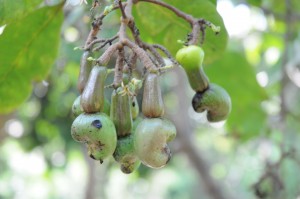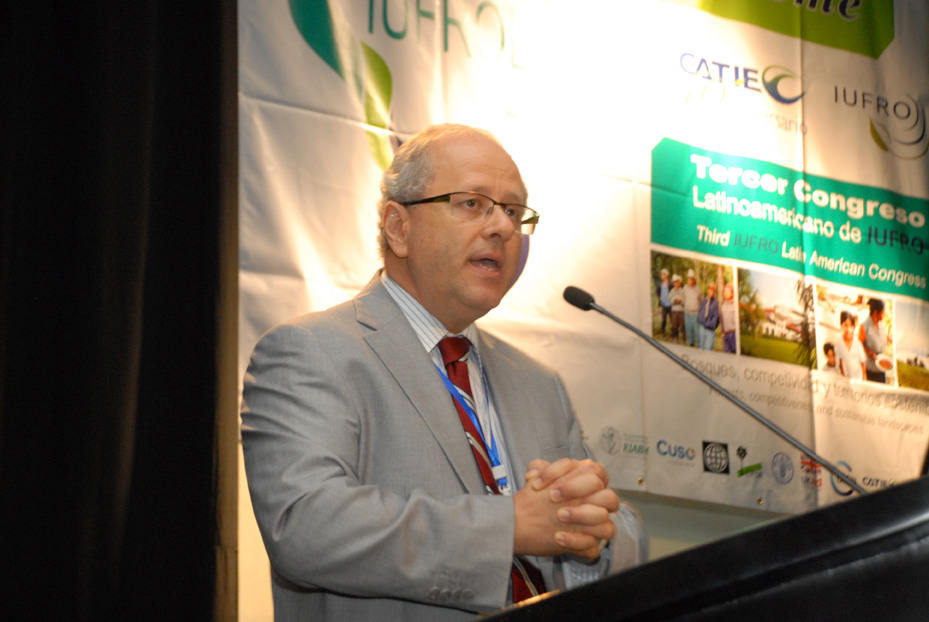View from the forest: the interlinked crises of COVID-19, environmental degradation and inequity – A Guest Blog
The underlying cause of the COVID-19 pandemic is the spill-over of a virus from a presumed bat wildlife source – and its spread in the vast human population and its vulnerable systems. There are many questions yet unanswered about the virus’s source – which species of bat, was it sold in the Wuhan Wet Market, did a number of bat-human transmissions occur or were transmissions to other animal species involved in the development of a virus capable of human to human transmission. For the moment all efforts are on controlling the disease. It has emerged and spread rapidly around the highly connected planet. In the long run, understanding how to prevent further such pandemics will be a major focus.
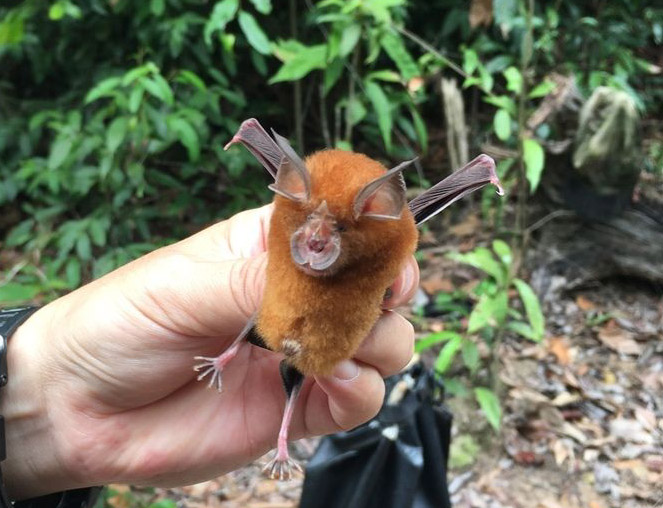
Link to license: https://creativecommons.org/licenses/by-nc/4.0/legalcode
Ethiopia: matching project plans to budget, and human resource capacity is crucial in FLR
We are now in the Sub-Saharan African country Ethiopia, “land of origins”, meaning origin of humankind, Arabica coffee, blue Nile, and many more. In the seventh blog post, the name of the restoration project is Ethiopia’s Landscape Restoration at Lower Meqii (Dugda area), Soddo district.
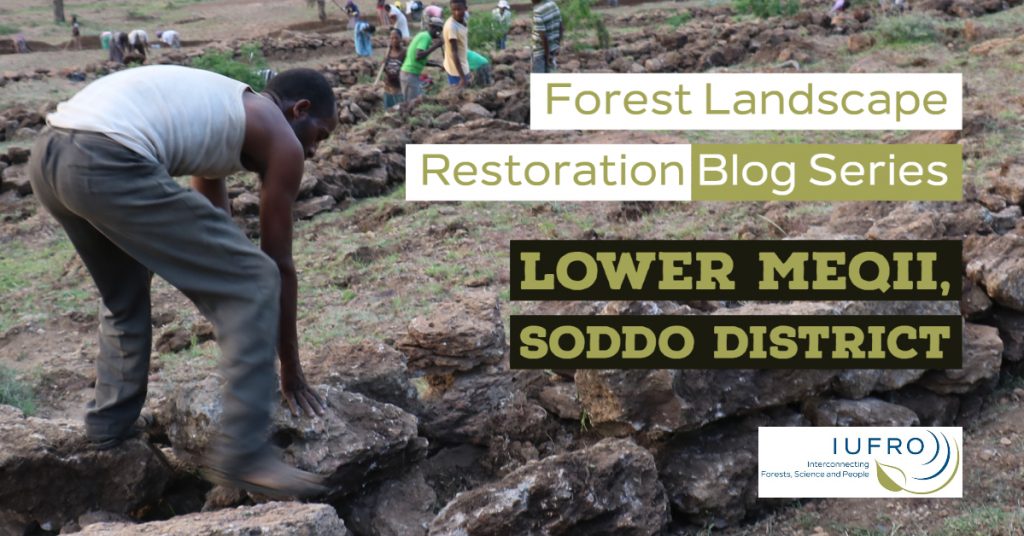
IUFRO 125th Anniversary Congress Spotlight #51 – Pooling resources to meet sub-Saharan forest challenges
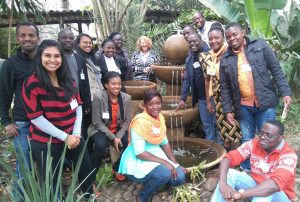
Training workshops for early and mid-career forest scientists across FORNESSA countries contribute to enhancing research competence and networking. (Photo by Michael Kleine, IUFRO)
Collaboration and cooperation are the keys to facilitating learning and making better use of research outcomes in sub-Saharan African countries facing severe forestry challenges.
That’s the philosophy behind Dr. Joseph Cobbinah’s upcoming session on the impact of forestry research on policy, livelihoods and economic development in sub-Saharan Africa. The session will take place at the IUFRO 125th Congress in Freiburg in September. Read more…
Spotlight #30 – Forests: Food for thought – and nourishment
Forests: Food for thought – and nourishment
A report that analyses the complicated, intertwined and often oppositional philosophies, land uses and governance regimes that comprise the forest-food nexus, will help inform deliberations as the United Nations Forum on Forests develops a 15-year roadmap for international forest policy.
At the heart of the new report is the understanding that forests and trees cannot, by themselves, replace the role of agriculture, but they are critically important to food security and nutrition.
Food production without forest destruction – is it possible?
Is there a chance of providing enough food for 9 billion people on earth and at the same time ensuring that natural resources such as forests, soil and water are not depleted or destroyed and climate change impacts are not aggravated? This is the main question that the Global Landscape Forum will address in the coming two days in between the first and the second week of the COP19 climate negotiations in Warsaw.
 One day ahead of the GLF, a distinguished panel shared their thoughts on the Global Landscape Forum’s goals and importance to international climate discussions and negotiations at a press briefing.
One day ahead of the GLF, a distinguished panel shared their thoughts on the Global Landscape Forum’s goals and importance to international climate discussions and negotiations at a press briefing.
New expert panel assesses linkages between forests and food security
Forests play a major role in achieving Millennium Development Goal 1 to eradicate extreme poverty and hunger and in striving for food security. Globally, millions of people depend on forests for their food security and nutrition, directly through the consumption or sale of foods produced in forests, indirectly through forest-related employment and income, forest ecosystem services, and forest biodiversity.
Current approaches to increasing food security tend to concentrate on agricultural solutions, ranging from intensification of agricultural production outside of forests to promoting agroforestry systems. Policy recommendations to establish a framework for promoting food security from forests, however, have so far been rather general and no framework addresses the relationship between forests and food security directly.
The “International Conference on Forests for Food Security and Nutrition”, held at FAO Headquarters in Rome in May 2013, inter alia conveyed the key message that forests, trees and agroforestry systems demand greater attention in strategies for food security and nutrition and in the fight against hunger. It also called for improved data collection at national and international levels.
Spotlight #15 – Planted forests’ roles: Different strokes for different oaks
Planted forests’ roles: Different strokes for different oaks
Planted forests are vital but vulnerable resources that can contribute in a sustainable fashion to some of humanity’s most pressing needs – poverty alleviation, food security, renewable energy, mitigation of and adaptation to climate change, and biodiversity conservation – as well as the preservation of natural forests.
These are among the findings in the recently published Summary Report of the 3rd International Congress on Planted Forests. It is based on outcomes from three scientific workshops and a plenary meeting that took place earlier this year.
Thirty-three countries have greater than 1 million hectares of planted forest area. Together these countries comprise 90% of the world’s 264 million hectares of planted forest which, in turn, equals almost 7% of the total global forest area. The report takes into account key research findings from Africa, Asia, Europe, Oceania, Latin America and North America related to vulnerability, viability and governance of planted forests.
IUFROLAT III Keynote Address Highlights: Peter Holmgren, CIFOR
 Peter Holmgren, Director-General of the Center for International Forestry Research, presented his Keynote Address, “Forestry in a landscape approach – developing evidence-based policies”, during the final day of sessions of IUFROLAT III.
Peter Holmgren, Director-General of the Center for International Forestry Research, presented his Keynote Address, “Forestry in a landscape approach – developing evidence-based policies”, during the final day of sessions of IUFROLAT III.
Holmgren, presented a series of questions, framing a way forward to position forestry alongside that of other land users to address multi-sector problems in a landscape approach.
In his first question, “what are the policies we need?” he defined what shapes many of the forest policies, not only in Latin America, also on a global scale. These included poverty reduction, nutrition and food security, climate change adaptation and mitigation, preservation of biological diversity, and achieving green growth and equity. He outlined how forestry is related to 9 out of 12 sustainable development goals, and we need to think about where forestry can play a role in policies being politically relevant and providing positive contributions.
He transitioned by asking, “how does forestry contribute?” and presented his thoughts on how forestry is portrayed on increasingly large level. Forestry has become an environmental issue and forestry related questions are often blurred with perceptions of forests on a whole. Topics such as REDD, illegal logging, etc have brought attention to forests, yet fundamentally, they are not forestry issues. Holmgren proclaimed, “We need to take forestry out of the forest”. He explained how the adoption of a broader definition of the role of forestry, and how it applies to address key issues across a landscape, could be employed.
Expanding on this thought, Holmgren asked the question, “how is a landscape approach different?” In answer, he identified a sustainable landscape framework that focuses on objectives such as; ensuring livelihood provision, sustaining ecosystem services, securing food and non-food products, mitigating pollution and achieving resource efficiency. To do so, we need to see landscapes as a large part of sustainable development, identify multiple objectives and acknowledge that there are beneficial synergies as well as trade-offs. We need to build our work to ensure that local stakeholders are in charge and help strengthen the role of sectors to support them building a holistic landscape.
In order to provide this support, we must incorporate evidence-based approach in our science and policy interface. He answered his final question, “what is different about an evidence-based approach?”, by introducing new models that identified the importance of satisfying demand by stakeholders for information with relevant, credible forest science research.
Holmgren closed with some take home messages:
- It is time to take forestry out of the forest,
- We need a landscape approach to deal with sustainable development challenges; and
- Our plans for the future must be evidence-based.
IUFROLAT III Keynote Address by Eduardo Mansur, FAO
Challenges and Opportunities for Sustainable Forest Management in a Changing Context
Wednesday, 12 June 2013
The first keynote speaker at IUFROLAT III was Eduardo Mansur, Director of FAO’s Forest Assessment, Management and Conservations Division. He talked about “Challenges and Opportunities for Sustainable Forest Management in a Changing Context”.
First, however, he conveyed greetings from Eduardo Rojas Briales, Assistant Director-General and Head of the Forestry Department, Food and Agriculture Organization of the United Nations, on whose behalf he was giving this presentation.
Mansur started by asking what the world should be like in 2050, when the world’s population is estimated to have exceeded 9 billion people.
Pressure on natural resources and the need for food will have increased tremendously by that time. He identified the following major challenges:
1) Food
2) Energy
3) Climate Change
In order to respond adequately to these, which are in fact closely interrelated, he explained various necessary approaches such as the landscape approach. He also underlined the big potential of restoration for improving the environmental situation without affecting food security.
In view of these challenges, the main objectives of FAO are:
1) Eradication of hunger
2) Elimination of poverty and strengthening of economic and social progress
3) Sustainable management of natural resources
Part of the response to these challenges is better governance of resources and more social participation. Integration and inter-sectorial approaches are key here. This is also especially true for forest research, which needs a more integrated approach.
Mansur explained concepts and tools that FAO has worked with so far and will continue to use in the future, such as the concept of sustainability, the forest resources assessment (FRA), criteria and indicators, etc.
In conclusion, he identified communication and social networks as a key tool to change people’s often blurred conceptions especially with regard to forest management. Science and research are essential here as they can provide the data and knowledge which will help to do away with erroneous perceptions and trade-offs between biodiversity and forest use, for example.
IUFRO Spotlight #8 – Combatting Climate Change Comprehensively
Combatting Climate Change Comprehensively
By Ben Chikamai (Kenya Forestry Research Institute)
IUFRO Board Member, Kenya
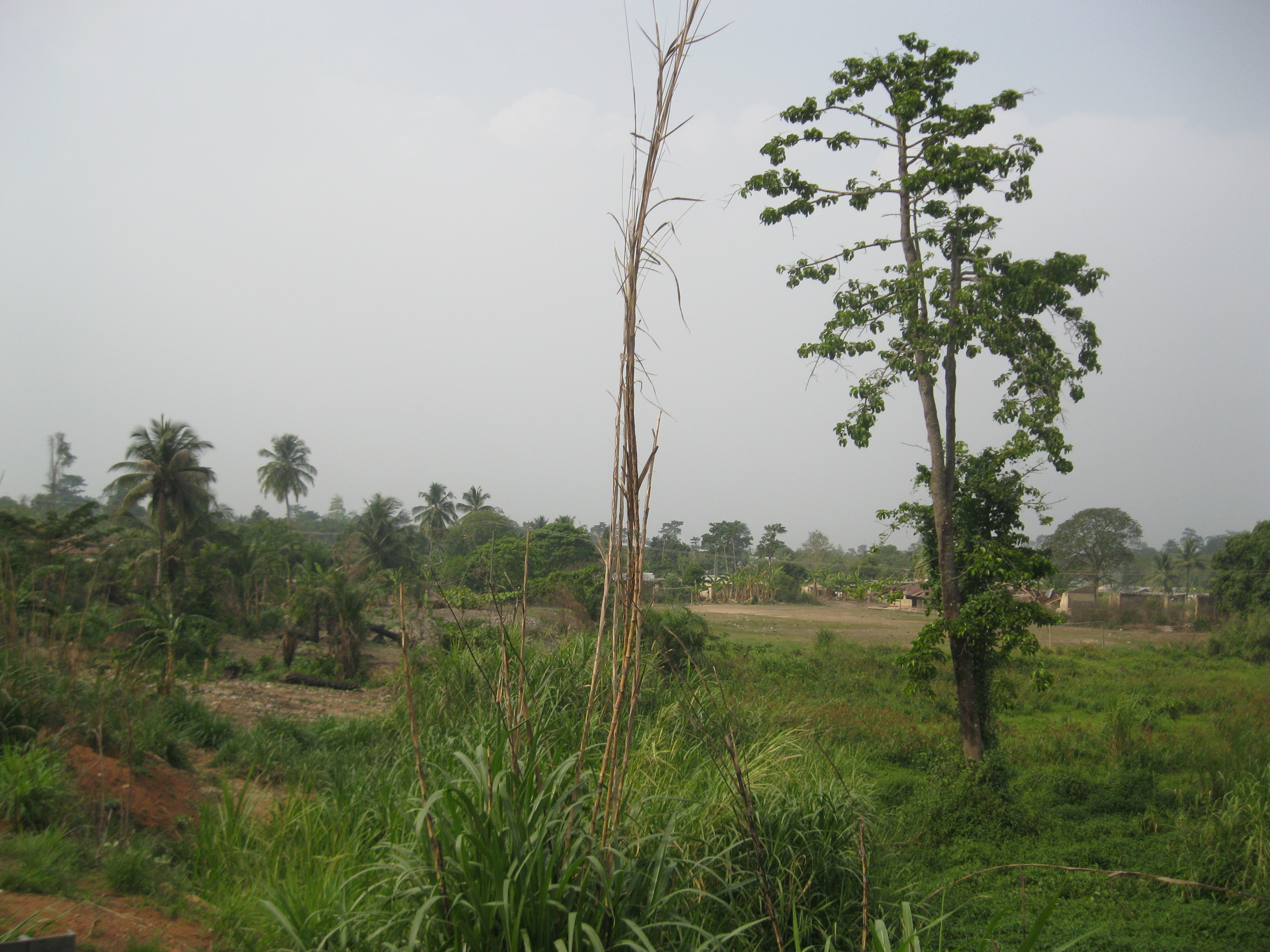
Degraded forest landscape in the Offinso District, Ghana. The original high forest cover has been modified through over-exploitation of wood resources, agriculture activities, and establishment of human settlements. (Photo by Ernest Foli, FORNESSA)
African forest policy makers and governments could benefit by using a recent study as a template to help bring climate change adaptation into the mainstream of national development strategies.
The study, conducted in two forest-dependent areas in Africa, emphasizes cross-sectoral planning – recognizing and incorporating interacting priorities, such as agriculture, health, forestry, land-use planning, water resources, energy, education, etc. – as a key element in implementing any effective climate change adaptation strategy.
Forests can play an important role in achieving climate change adaptation goals in Africa. But sustainable forest management decisions alone can’t accomplish that. Policy decisions – for forests as well as other resource areas – must complement one another. At present, impacts from some of those other sectors may actually be threatening the forests.
There are a number of pressures on Africa’s forests – agricultural expansion and forest over-use among them. Reducing non-climatic pressures, in a logical, prioritized manner, can help reduce the vulnerability of forest ecosystems. That’s crucial because many people in Africa are highly dependent on forest goods and services. Those people are, and will continue to be, particularly vulnerable to the impacts of climate change. Improving the capability of forest dependent communities to adapt to a changing climate will reduce that vulnerability.
The study: Enhancing Adaptation of Forests and People in Africa – Development of Pilot Cases for Selected Forest Ecosystems in Ghana and Malawi, examined forest issues related to climate change in selected areas of those countries. The authors, E.G. Foli and S. Makungwa, worked in those specific areas because they represent typical examples of the ecological and socio-economic situation prevalent in Sub-Saharan Africa, so the findings could also be applied to countries in West, Central, Southern, and parts of East, Africa.
Among other findings, the study confirmed a general trend of increasing mean annual temperatures and a decline in mean annual rainfall. In the Ghana pilot area this has resulted in forest loss due to wildfire; a decline in the availability of non-timber forest products; reductions in agricultural crop yields; and declining potable water supplies and the associated risk of water-borne diseases. In the Lake Chilwa area of Malawi, in addition to declining potable water supply and its associated disease risks, there has also been poor productivity on tree farms; loss of indigenous trees in communal areas, riverbanks and surrounding forest reserves; a decline in agricultural productivity; and declining fish catch from the lake.
While the study noted how changing climatic conditions can adversely affect livelihoods, health and food security in those communities, it also noted examples of locally initiated adaptation strategies developed to mitigate the impacts of the changing climate. By compiling existing information, including the needs of stakeholders in the various inter-related resource areas, consulting with local communities and assessing and evaluating each project site, enhanced and concrete adaptation measures for the pilot areas were developed.
Then, a priority setting exercise was carried out to identify appropriate and relevant adaptation strategies and activities that would best serve the communities. Similar techniques could be used across a much wider area, the authors say, but that will require political will, financial commitment, and an integrated multi-sectoral – even trans-national – approach. It’s a challenge, they agree, but one that must be faced.
The full study can be found at: http://www.fornis.net/content/enhancing-adaptation-forests-and-people-africa-development-pilot-cases-selected-forest-ecosy

